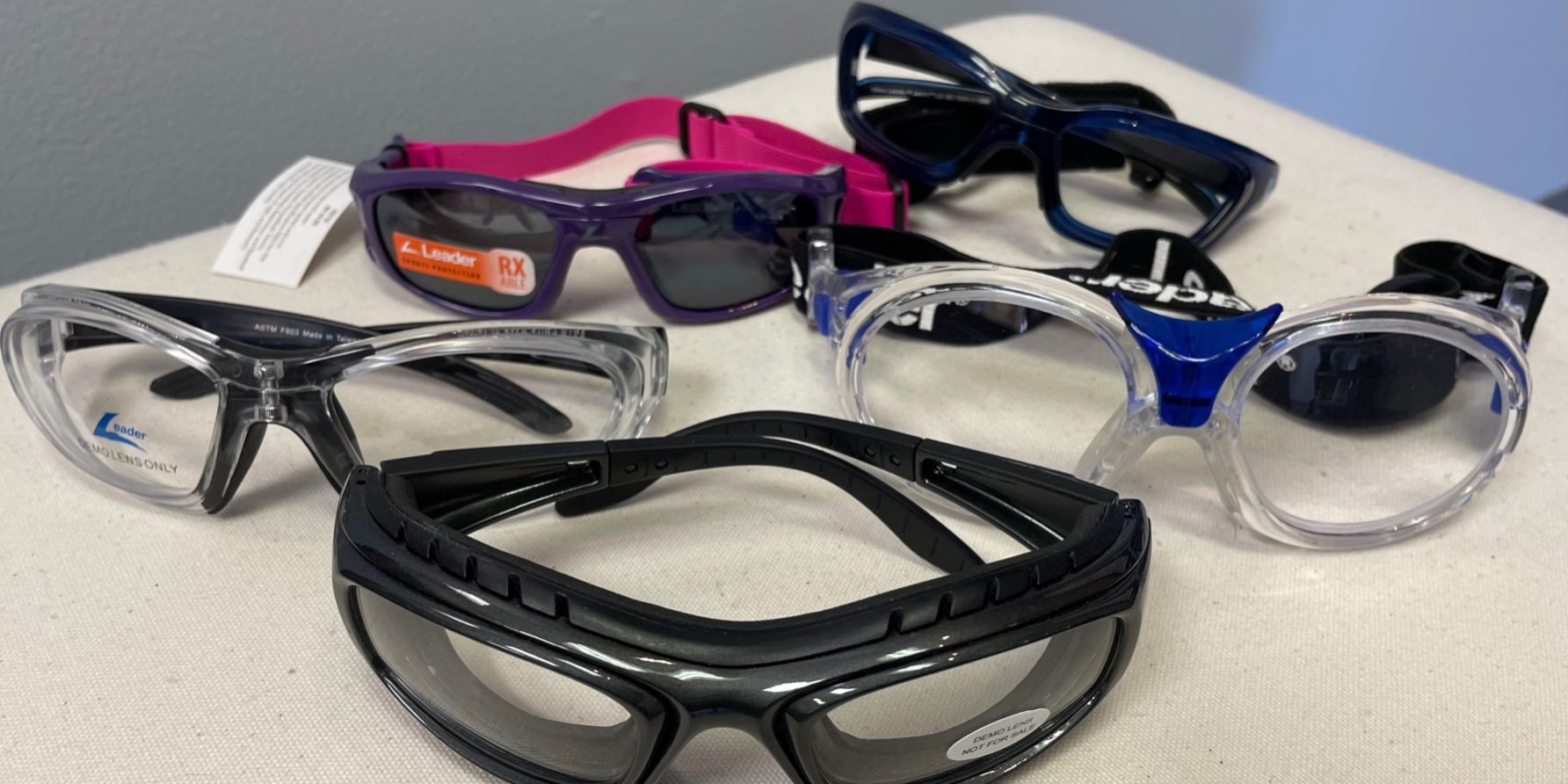April 2022
Spring is in the air, and we are chomping at the bit to get outdoors and get active as the temperatures rise. We don baseball gloves and swing bats. We kick soccer balls and throw around lacrosse balls. Indeed, we are itching to get out and get physical! Children and adults alike will participate in organized sports leagues after the winter hibernation. The excitement, adrenaline rush and competitive spirit come alive, and all is good and well, until it’s not.
As we move outdoors, we anticipate some common injuries associated with sports (scrapes, bruises, even broken bones). But how often do we anticipate possible eye injuries? Did you know that over 600,000 sports-related eye injuries occur each year? One-third of these injuries occur in children, and of these, 30,000 are treated in emergency rooms annually. The good news is that approximately 90% of these injuries are avoidable with the proper eye protection. This protection comes in different forms based on the sport or activity. The National Eye Institute denotes baseball, softball, hockey, basketball, racquet sports and lacrosse as sports with the highest rate of eye injuries.
The most common types of eye injuries are blunt trauma, corneal abrasions and penetrating injuries.
- Blunt Trauma occurs when the eye is suddenly compressed due to impact. The impact can cause a black eye of the surrounding tissue, or even bleeding in the eye (hyphema). Elbows, balls and racquets tend to be the greatest offenders. Often, blunt trauma can lead to broken bones around the eye socket called a fracture of the orbit. This can lead to serious damage to the structure surrounding the eye and lead to vision loss. See an ophthalmologist immediately.
- A corneal abrasion is a scratch of the eye, most commonly caused by a finger. While these often heal on their own with time, a visit to an eye care professional is recommended. An eye drop may be prescribed for infection control and sometimes a “bandage” contact lens may be inserted to promote healing.
- Penetrating injuries are extremely serious and occur when a foreign object pierces the eye. Often, the shattering of regular eyeglasses during sports are the culprit. Penetrating injuries should ALWAYS be addressed by an ophthalmologist immediately.
After a probable eye injury, seek care from an eye care professional as soon as possible. If you have any doubt, consider the following signs and symptoms and seek medical help.
- Severe facial or eyelid swelling, tenderness of the eye area.
- Pain when looking up or down
- Difficulty seeing or difficulty tracking
- Double vision
- Sunken eye
- Unusual pupil size or shape
- Blood in the clear part of the eye
- Blood surrounding the white part of the eye
- Numbness of the upper cheek and/or gum
Delaying care with any of these symptoms can result in permanent vision loss, even possible blindness.
Eye protection comes on various forms.
- Sport goggles are the most obvious. For those that wear eyeglasses or contacts for vision correction, refrain from wearing regular eyeglasses and contacts while participating in sports or other rigorous activity. Everyday eyewear does not meet the impact resistance of sport goggles measured by the American Standards for Testing and Materials (ASTM). Impact resistant eyewear can be purchased at your local eye care professional location. Proper fit is also important to ensure the best protection.
- Face masks are also essential for some sports. These will help to avoid blunt trauma for a sport with higher risk. Lacrosse, hockey and some racquet sports requiring a facemask or helmet with a face guard. However, these masks or guards are open and can still expose an athlete to a stray finger or piercing object. For additional protection, a polycarbonate face shield can be considered.
As we head outdoors, join leagues and get more physical, do your homework. Check your options and consider the risks. PROTECT YOUR VISION! We are only given one set of eyes. Don’t take them for granted. See the world around you with your best possible vision.
For more information visit:
American Academy of Ophthalmology https://www.aao.org/eye-health/tips-prevention/injuries-sports
National Eye Institute https://www.nei.nih.gov/learn-about-eye-health/healthy-vision/sports-and-eye-safety-tips-parents-and-teachers
The Vision Council https://thevisioncouncil.org/sites/default/files/SportsEyeSafetyReport.pdf
Prevent Blindness https://preventblindness.org/sports-eye-safety/







